#subtext in sherlock
Explore tagged Tumblr posts
Note
Hello Steph, the wedding episode feels weird to me. I mean Sherlock and John dressed the same, greeted guests together, sat at the center of the table that was decorated with apparently green carnations, etc. If I attend a wedding like this in real life or they were a Victorian couple, I'd say Mary is a beard. I know part of it was fan service, so we can get cute screenshots. Any other speculations on why the wedding was designed like that? What are they trying achieve? Love from the US
Hey Nonny!
Oh yeah, TOTALLY was really weird, and why a lot of people started to really believe that Johnlock was the direction it was going. Like, even the promo photos, they looked like two grooms together. The best man and the groom don't usually dress alike, LOL. Even Mary was sidelined in all the promo photos. It was a huge discussion back in the day, and the TSo3 meta is what got me into the fandom head-on in the first place.
Like... the wedding episode, promoted as such... had everything BUT an actual wedding in it. You never see them get married. You see John essentially proposing to Sherlock, Sherlock be a bridezilla, and like... Mary was so not even involved.
So yeah, to from THAT to ... whatever TFP was is... something else indeed.
#steph replies#chatting with nonnies#tso3 meta#tso3#john and mary's wedding#was actually#john and sherlock's wedding#just basically true things#subtext in sherlock#johnlock is real#to me#s3 speculations
63 notes
·
View notes
Text
*me at the club* so does anyone wanna discuss queer undertones in classic literature?
#frankenstein#dracula#the great gatsby#moby dick#hamlet#jane eyre#twelth night#as you like it#the picture of dorian gray#mrs dalloway#the merchant of venice#calling some of these subtext feels derivative but tagging anyway#sherlock holmes#anna karenina#the strange case of dr jekyll and mr hyde#wuthering heights#little women#literature#classic literature#queer subtext#queer lit#lgbtq+
7K notes
·
View notes
Text
does anyone realize how crazy it is to have the actor of a mostly headcanoned queer ship say the fans were never crazy and they were right all along after 10+ years of everyone just absolutely going nuts over the said queerbaited ship
#supernatural#dean winchester#spn#destiel#castiel#deancas#misha collins#im 20 i have been Experiencing supernatural and johnlock since i was 12 and merthur since wayy before that i have fought Wars#this is crazy#i love u hannibal i love u 911 (if u make eddie gay)#for the love of god by 'mostly headcanoned' i dont mean that it was never intentional#i am aware that they put the subtext in on purpose#they knew what they were doing#but my focus here is on the actor actually saying it because like#if its not mostly headcanoned then y was the entire cast denying it for years AND YEARS#like do yall not remember what jared and jenesn used to say#there have been many many many instances where the cast has made us feel crazy/stupid for saying anything abt destiel#im just saying TO ME its crazy that actors and creators talk so openly about these things now !!! again i was raised on merlin and sherlock#ok also im confused on the queerbaiting part#everyones saying its queer coding and not queer baiting but cant they be true at the same time ?#im not being dumb on purpose i swear im just confused#like yes dean is very much bi coded and their relationship is queer coded but if the creators deny everything#and we only get a last minute confession after 11 years#that doesnt count as queer baiting ?#someone smart explain this to me 🙏
4K notes
·
View notes
Text
We had canon gay Sherlock Holmes in barely post-Hays Code Hollywood

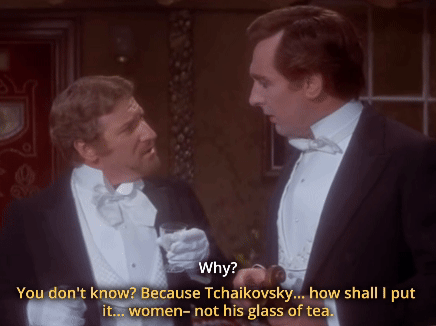
(Rogozhin tries to persuade Holmes to sleep with Madame Petrova)
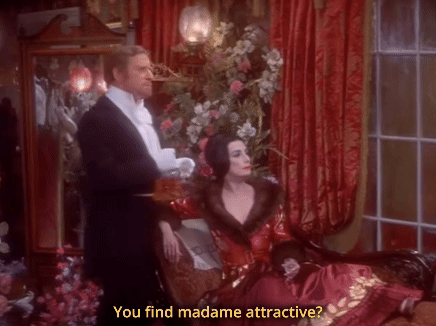

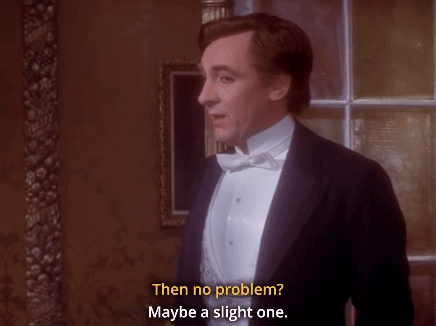





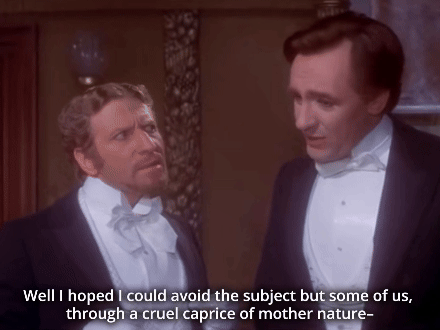
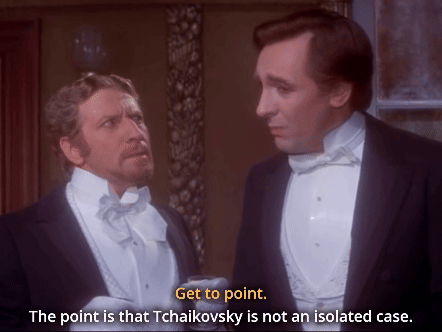


The Private Life of Sherlock Holmes (1970) dir. Billy Wilder
#I studied billy wilder in school cos he did some interesting queer stuff with 'some like it hot' and I remember reading that he snuck some#queer subtext into his sherlock holmes film. but this is not exactly 'subtext'#you could argue that he lied to get out of marrying her and sure he is lying about being in a relationship with john but not the rest of it#because he sure as hell isn't lying when he discusses it with watson later. maybe I'll gif that scene too#sherlock holmes#the private life of sherlock holmes#tplosh#johnlock#billy wilder
754 notes
·
View notes
Text
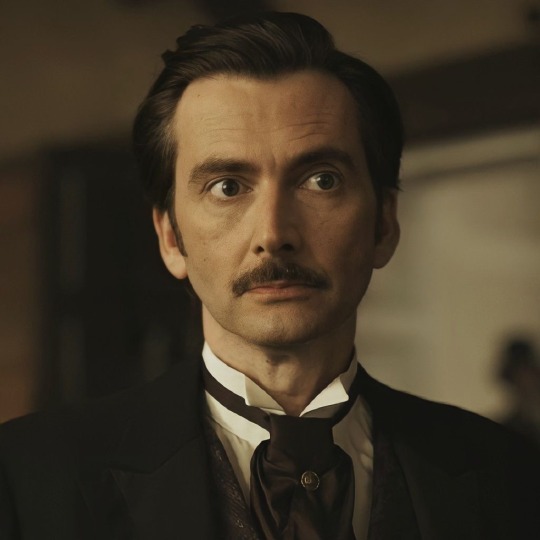



anyways. new personal holmes & watson ideal casting
#when I say ideal I mean I know david would play him slutty and michael would serve gay subtext#david tennant#michael sheen#david and michael#Sherlock Holmes#holmes x watson
2K notes
·
View notes
Text
so I was once again listening to another BBC dramatization, this time of The Noble Bachelor, and at the end of it Watson and Holmes talk a little of Watson's upcoming wedding with Mary and Watson's like "I'm greatly looking forward to our wedding" and Holmes says to that "hm, make sure you keep an eye out for strange gentlemen sitting in front pews" and like. what do you mean by that. the entire story is about a woman who thinks the love of her life is dead (I won't even begin to make parallels to Reichenbach with this) and so she decided to marry an englishman, but then the love of her life reappears and sits in the front pew at her wedding and so she leaves her new husband and plans to elope with her newly found boyfriend. what the hell even. not to mention how many times Watson's own wedding is mentioned in the story, and how he even asks Holmes if he'll be there, to which he says that he of course will be. like. the fuck. I am once again asking what the hell am I supposed to think about this, BBC.
#johnlock#acd holmes#acd johnlock#acd watson#acd sherlock#what the hell#BBC dramatizations are crazy fr#and definitely worth a listen#if you're looking for crazy johnlock subtext#sherlock holmes#john watson
101 notes
·
View notes
Note
Honestly i love your art style it's so pretty. G
I am going through and liking all your art rn. I know you like requests though (honestly I do to idk what to draw mostly if the time frfr ToT) but would it be ok if i request either Soukoku(ask subtle or more as you want) for the kitsune/oni au or the phantom theif au? Whichever one you wanna do. Thanks for reading my yap

Im glad you like my art! As a survivor of the BBC Sherlock tumblr fandom in the ancient superwholock wars, this was specially funny to me
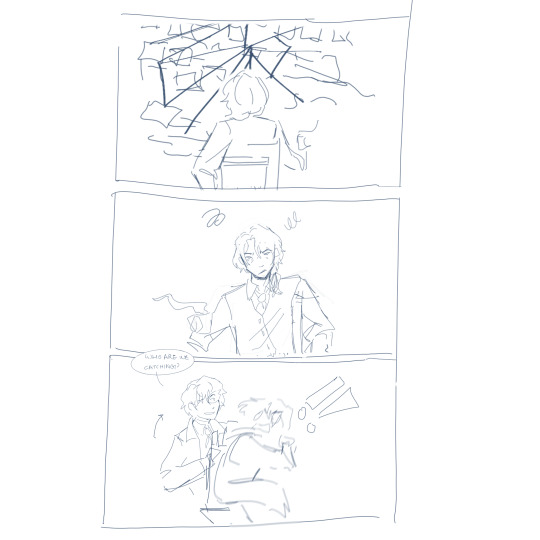
Dazai just can’t get rid of the ugly ass bolo tie in any universe huh
#silly dudes with so much homoerotic subtext hehe#bbc sherlock#sherlock holmes#shitpost#art#bsd#bungou stray dogs#skk#dazai osamu#chuuya nakahara#asked and answered#request#requests#phantom thief#phantom thief au#Skk phantom thief
91 notes
·
View notes
Text
Gay Easter Eggs in BBC Sherlock

(I trust the above requires no explanation.)
Perhaps someone has done this before, but I wanted to put together a compilation of gay easter eggs in the show that I’ve seen other people point out and/or have thoughts on myself. So here it is!
When I say “easter eggs,” I’m thinking of small clues that the show creators included in the set designs, music choices, and other details of the show to reference that Sherlock and John are in love. I’m thinking of things you could miss at first, especially little clues that often require a bit of extra information or require observations across episodes to understand.
Of course, there’s also lots of subtext woven into the show, moments where interpreting the dialogue or visuals in a certain way tells us something about Sherlock, John, and/or the state of their feelings for one another. I’m not sure if I can clearly define “subtext” versus “easter eggs” and explain what distinguishes them, but at least to me, several of the things I’ve listed here seem a bit different from what people often refer to as subtext. Maybe subtext is about uncovering the layers to a piece of dialogue or an action that takes place in plain sight and seeing how that impacts our interpretation of the story, but easter eggs are about spotting smaller, hidden details. I’m not trained in literary or film studies, though, and I’m not trying to be doctrinaire about this at all! This list is just for fun, anyway. (The above image might not actually count as an easter egg, but I couldn’t resist including it here. Indulge me.)
The more I read about this show and the harder I look, the more I think that hardly anything is there on accident. All these easter eggs must have been included on purpose. The creators knew they were telling a love story all along.
I’ve linked to the posts where I initially saw people point these out or to other good sources, and for some of these I’ve added my own commentary/observations/interpretations. I’m sure there are many other easter eggs that I’ve missed! What have you spotted?
John’s PIN in TBB – When John tries to pay for his groceries at the beginning of the episode, we see that his PIN is 743. In ASIB, Irene’s code to unlock her phone is SHER, which would be 7437 on a phone keypad. So, John’s PIN is a clue that he is or will be in love with Sherlock. Source: @loudest-subtext-in-tv, here.
Shaftesbury Avenue, 20m from Piccadilly Circus in TBB – While investigating in Chinatown, Sherlock and John bump into each other at what used to be a cruising spot for gay men in London. Source: @the-signs-of-two, here.
Archer the American in ASIB – In the scene where the American CIA agents try to get Sherlock to open Irene’s safe, the head CIA agent pressures Sherlock by threatening to have one of his men shoot John. The agent says: “Mr. Archer, on the count of three, shoot Dr. Watson.” Ordering someone named “Archer” to shoot John could be a reference to Arthur Conan Doyle’s poem “The Blind Archer,” which is about Cupid and describes Cupid shooting two men who sound an awful lot like Sherlock and John. Source: couldntpossiblycomment, here.
“¿Dónde Estás, Yolanda?” in TEH – The song that plays during the scene with John and Sherlock’s disastrous reunion at the Landmark restaurant is a cover of the song “¿Dónde Estás, Yolanda?” performed by the band Pink Martini. The Spanish lyrics to this song are about searching for a long-lost lover, which is fitting for the scene where John sees Sherlock again for the first time since his fall. Notably, the creators didn’t use the first of the two versions of this song that Pink Martini has released. The band’s first version appears on their 1997 studio album Sympathique and features a man singing about a woman. Instead of using that version, the creators used the version from Pink Martini’s 2011 compilation album A Retrospective, in which China Forbes performs most of the vocals. So, the creators deliberately chose a remade version of the song in which a woman sings about a woman. They chose a gay song about searching for a long-lost lover for Sherlock and John’s reunion. abrae (@tea-and-liminality on tumblr) has a meta with more to say about the use of this song here.
John’s “oscillation on the pavement” in TEH – In TSOT, John observes a potential client standing outside 221B and trying to make up her mind as to whether to come in. Sherlock tells John “I’ve seen those symptoms before. Oscillation on the pavement always means there’s a love affair.” In the previous episode, John came to visit Sherlock at 221B but hesitated on the pavement outside, staring at the door and trying to decide whether to go in. Sherlock’s comment, “I’ve seen those symptoms before,” is a hint that we, the audience, have also seen those symptoms before—with John in the previous episode. Source: @bidoctor, here. (I saw someone else point out that last part about Sherlock’s hint to the audience, but I can’t find that post, sorry!)
Lilac dresses in TSOT – While planning John and Mary’s wedding, Sherlock chooses lilac-colored dresses for the bridesmaids. When John tells Sherlock that he likes the bridesmaids in purple, Sherlock pointedly corrects him by stating that the dresses are lilac. Apparently, “In Victorian times, giving a lilac meant that the giver is trying to remind the receiver of a first love.” So by dressing the bridesmaids in lilac, Sherlock is trying to remind John of his first love: himself, Sherlock. My heart breaks. Source: @asherlockstudy, here.
Putting the horns on Mary and Janine in TSOT and HLV – In TSOT, there’s a shot where Mary gives Sherlock and John a thumbs up before they head out on a case. The way Mary is standing, the horns on Sherlock’s cow skull thing on the wall behind her are placed right over her head. (I always thought this shot looked pretty weird, but now I see that it must have been intentional!) In the HLV scene with Janine at 221B, there’s a moment when Janine steps in front of John in the frame to kiss Sherlock, and her movement positions the horns right over her head. “Putting the horns” on someone means cheating on them. So in both cases, placing the horns right above Mary’s and Janine’s heads indicates to the audience that Sherlock and John are the real relationship in this show. Source: this post from multiple users on the @sherlockmeta blog.
The architecture of Sherlock’s mind palace in HLV – In the mind palace scene after Mary shoots Sherlock, the architecture of Sherlock’s mind palace is based on locations from ASIP. Sherlock literally built his mind palace out of places from his first case with John, illustrating that his relationship with John is what grounds him and that it means everything to him. abrae has some very helpful screencaps of this here (and I would recommend that whole meta, btw!)
The glasshouse scene in TAB – In TAB, the Victorian John tries to ask Sherlock about his sexuality and sexual history while they’re sitting in a glasshouse. In Victorian Britain, “glasshouse” was another term for a military prison. So John, a military veteran, asks Sherlock about his sexuality in a setting that represents where he would have been sent if he had acted upon his homosexual desires at a time when homosexuality was criminalized. Source: @haffieliesel, here.
What do we say about coincidences? The universe is rarely so lazy.
#johnlock#bbc sherlock#sherlock#tjlc#meta#gay easter eggs#subtext#sherlock x john#sherlock holmes#john watson#mary morstan#janine#janine hawkins#irene adler#tbb#asib#teh#tsot#hlv#tab#the blind banker#a scandal in belgravia#the empty hearse#the sign of three#his last vow#the abominable bride#the universe is rarely so lazy
173 notes
·
View notes
Text
I am not writing Doctor Who meta (I am NOT), but despite being a Who fan before becoming a Holmes fan, I now read Doctor Who through a Sherlockian lens, because for well over a century that has the blueprint for Investigator + Companion, with Occasional Supervillain to Heat Things Up storytelling.
[and yes, because RTD and Steven Moffat are in each other's pockets constantly and having a really fun time about it.]
[and also, probably coincidentally, but nevertheless, because the Sherlock Holmes stories are timey-wimey in ways that cannot be logically reconciled.]
From a Sherlockian perspective, the great sin committed in designing Doctor Who was combining Holmes (the Investigator) and Watson (the Doctor) into a single character: the Doctor. This freed the creators up to have expendable "What do you mean?" characters as companions, which is normally the Watson role. The problem is that Watson is not just a "What do you mean?" guy. He's the narrator. He's responsible for the version of events in the lives of Holmes and Watson that reaches the audience. Which is canonically not the truth. There are always at least two parallel versions of events in play, if not three (depending whether the versions we read are the versions Watson describes having published), or—assuming Watson doesn't or can't transcribe other people's accounts verbatim—four.
So, as a Sherlockian, encountering a Doctor Who series in which "Who is telling the Doctor's story?" is subtextually a plot point is very interesting to me. This happening in a new era in which "bigeneration" becomes a thing is very interesting to me. Having multiple versions of the same story, perhaps as little as a hair's breadth apart, as manipulated by a character, is interesting to me. Having the myth of the character interfere with the character's reality is extremely interesting to me. Especially because the showrunner has a deep understanding the origins and the myths of the Doctor and, you know, a sense of humour.
Davies is aware of all of this and it just seems unlikely to me that he's not playing with it on some level.
#dw#the reality war#sherlock holmes#false narration#I'm not directly addressing the marvellous potential of the storyteller as villain because I have too much to say about it#and yknow maybe these guys just write their best stuff as subtext for the five people who get it#the five people listening for the ninth word#but it's possible to do that and still write a series that pleases the surface narrative audience because those people are easy to entertai#and that's not what was done here#so yes I do expect a reveal#please do not clown on this post I am here to have fun and am not interested in how and why you hate [x]
35 notes
·
View notes
Note
Hi. Sorry if this was asked before or if I missed anything here. If you don't wanna answer it, it's alright.
In regards to Mark Gatiss' "playing with homoeroticism in Sherlock" interview question, is it possible he was talking about Sheriarty/Moriarty, not Johnlock here?
I associate homoerotic subtext mainly with those hero / villain "I need you, I want to destroy you, I want to kill you, but I don't want you to die because I need you, and they may be a deeper reason behind it) dynamics.
Johnlock on the other side, is mostly romantically coded, not sexually. And it's written more like a traditional romance, with the structure and the tropes.
Hey Nonny!
I think you're referencing this interview here? I just reread it, and the part I have seems to just be talking about Sherlock as a whole, and doesn't reference any ship specifically, so I think it's safe to say that I believe it's for everything done for the show. Regardless, in another interview, I believe, post S4, he still admitted to putting it in there to essentially bring in an audience. To me it doesn't matter which pairing it's referencing, it's still kinda awful.
And yeah, I agree re: the romance. But that's the thing... why put it in there at ALL if they weren't going to follow through? It's kinda shady. They could have stopped it in S3. Maybe they didn't realize what they were doing, but I doubt it. Mofftiss, for all their numerous faults are neither dumb nor unaware of what they're putting in their own material. Moffat has put subtext in his shows for years. His run of Dr. Who was full of it. But inevitably, what they did is kept dragging it out and got pissy at the end.
But yeah, that's my very loose take on it. I've written about it before and I still think it's pertinent today.
#steph replies#homoerotism#subtext in sherlock#shitposting#shitposting steph#my thoughts#chatting with nonnies
27 notes
·
View notes
Text
Subtext in The Creeping Man
I find that this story of Arthur Conan Doyle's Holmes canon features some of the most complex subtext we've had aside from A Study in Scarlet. But rather than being complex early-on because of our lack of knowledge of the characters, it is rather complicated by the fact that we both know too much and too little of their relationship. This story, with astonishing subtlety, conveys the cooperative relationship between Doyle's two characters — the nuance in their limits and strains, but also the joys that they work to reach, together. It emblemises the beauty of the Canon, where it all ties back to the joy and complexity of human understanding and belonging.
This story opens in "those latter days" (1903, near to Holmes's retirement) where Watson describes their relations as "peculiar". The word certainly feels like a euphemism from the ever-polite Dr. Watson, when it is soon made clear that their relations were far from amenable. Watson has become one of Holmes's "concentrated habits", and apparently is as good as a piece of funiture, as all of Holmes's remarks would have been as "appropriately addressed to his bedstead." It's given through snapped sentences; "I was a whetstone for his mind. I stimulated him. He liked to think aloud in my presence." This "irritation" and discordance between them is extremely concentrated in the early pages of this story, but drags through it, as well. Take, for example, the "laconic" (or perhaps iconic?) message:
"COME AT ONCE IF CONVENIENT — IF INCONVENIENT COME ALL THE SAME. S.H."
Watson gives us the original of Holmes's telegram to demonstrate to his readers just how "long-suffering" he is. A true exhaustion is apparent in how he simply shows the telegram, rather than politely referring to it. Compare this with the unendingly civil telegram sent to Watson in The Boscombe Valley Mystery, and you can see the great shift that has taken place in their alliance.
"HAVE YOU A COUPLE OF DAYS TO SPARE? HAVE JUST BEEN WIRED FOR FROM THE WEST OF ENGLAND IN CONNECTION WITH BOSCOMBE VALLEY TRAGEDY. SHALL BE GLAD IF YOU WILL COME WITH ME. AIR AND SCENERY PERFECT. LEAVE PADDINGTON BY THE 11.15."
While long-term and intimate relationships will remove need for over-courtesey, there are two very different reasons for why Doyle has shown both of these telegrams at a point in time. This accumulation of Holmes's ungrateful behaviour not only imparts Watson's utter despondancy, but also, importantly, Holmes’s — and this is something that Watson's ever-perceptive and intelligent heart does not fail to miss. It is important to note that this story nears Holmes's retirement, where he acknowledges that he has been "sluggish in mind". There is no doubt, then, that the great detective is out of his prime. Hence the temperementalness, taking his Watson for granted, and a heavier reliance on those "narrow and concentrated habits."
Despite the turbulent roads of their life, we see Watson's undying devotion co-exist with it. Past all the irritation, Watson closes, "Such was my humble role in our alliance." It is more than clear that he consciously makes the decision to remain at Holmes's side, to be his ally. Such has always been Watson's role in their alliance. His "humble" service extends to his practice as doctor and soldier. His pride is in his duty to others, and to Holmes as his assistant.
There is something that shines through Holmes's unsocial behaviour when we look closely at the text.
I sank back in my chair in some disappointment. Was it for so trivial a question as this that I had been summoned from my work? Holmes glanced across at me. "The same old Watson!" said he. "You never learn that the gravest issues may depend upon the smallest things."
We know from the Canon (opening of DANC and RESI) that Watson's emotions are like an open book to Holmes. This 'sinking in some disappointment' is not missed by Holmes's 'glance'. "The same old Watson!" he says, and I feel it important to note that he compliments one of Watson's most distinguishing features; his stability and fixture — the "one fixed point in a changing age." Yet, we may miss these details, because Holmes, ever in his own insecurity, must back-hand every praise with a teasing chide. We could say that an attempt was made to cheer Watson up, though not very successful.
Developments continue, as Holmes tryingly says "I had hoped to have a longer chat with you", then parades him with compliments before their client, "Dr. Watson is the very soul of discretion". But mixed indications continue to come as he flips back to patronising language; "You will appreciate it, Watson, when"—. Doyle further cements Holmes's particular unbecoming behaviour on this day as he further also annoys their client, who speaks in a "tone of reproach" when Holmes does not listen, and is "clearly annoyed" at irrelevant interruptions — to which, Holmes only smiles in, what I believe, is pure self-importance.
Here we find a shift — a greater effort on Holmes's part, a second round of appreciation for Watson's stability, even when his opinion is faulty. "Good, Watson! You always keep us flat-footed on the ground". He's then included in his bubble; "We were gradually coming to that conclusion, were we not, Watson?", and even a sordid attempt at bringing Watson with him on the bait of the Chequers in 'Camford' where "the port used to be above mediocrity and the linen was above reproach." (Which he follows up on!)
And, despite these attempts, their connection still does not rekindle. Watson is clearly irritated still with the inconsiderate easiness with which Holmes was able to leave London, leaving only difficulty on Watson's end to join him. It's an indicator from Doyle that nothing's remedied, yet.
Here is an interesting passage for study.
"Have you the effrontery necessary to put it through?" "We can but try." "Excellent, Watson! Compound of the Busy Bee and Excelsior. We can but try — the motto of the firm."
Burstive praise from Holmes at the merest utterance of a phrase — a phrase which has only ever been used one other time in the Canon; the previous story, The Problem of Thor Bridge. This suggests it may be some small motto of Holmes's, though one not often seen in Watson's records — this makes his use of the phrase a very Holmesian approach. This participation, no doubt, is nothing but a delight for Holmes, who is trying to restring their relationship, and continues to overenthusiastically affirm Watson's sturdiness.
Yet it's made clear that superficial praises are not a true apology, as we see signs yet again of Watson's dispassion. As they sit to their meeting with Professor Presbury, Watson writes:
Mr. Holmes smiled amiably.
This sentence may seem unassuming, but be assured it is one of the coldest in the Canon. This usage of "Mr. Holmes" is entirely unique within the Canon. In other times, when Watson has used "Mr. Holmes" or "Mr. Sherlock Holmes", it has been when speaking directly to his readers, since they would be using the honourific. This moment is the only exception, where Watson has intentionally used "Mr." to create distance and convey undesire for intimacy with Holmes (rather than any professional effect). Why has Watson used the line here? Well, Holmes is 'smiling amiably' — in a way that forces a friendly manner, one that attempts to create a good impression with Professor Presbury — which also didn't work out, by the way. Considering all the superficial means up to now employed by Holmes on his companion, Watson no doubt feels cheapened and no more important than Holmes's investigative objects; as if his trust is just as easy to gain as anyone else's, with nothing but an 'amiable smile'.
We are shown time and again that Watson isn't pleased with Holmes's desultory attempts at reconciliation, until finally, a shift happens. One that is not identifiable in the text, and so is reasonable to assume happened unpenned. We find Holmes acknowledging that "Dr. Watson has his patients to attend to", when before this information seemed completely irrelevant to him. Holmes even sent Watson a "short note asking [him] to meet at the train"! The greatest change is when we finally have Watson using "my friend" and "my comrade" for the first time in this story. Now we see Watson taking real excitement in the case, in the "assurance of [his] comrade". Self-teasing also makes its way into their dialogue as Holmes cries "Oh, Watson, Watson, what a fool I have been!" The emphasised address seems to suggest an apology for something more. It's as if he cries 'Look how wrong I have been Watson, how imperfect and daft I can be!' It's adorable, really.
All semblances of reproach towards Holmes disappear as they steal together in darkness, come to the dénoument of their adventure, as Holmes philosophises on science and nature, and described admiringly as "the man of action". Our story ends in a light-hearted resolution, as always.
"There is an early train to town, Watson, but I think we shall just have time for a cup of tea at the Chequers before we catch it."
To conclude, this story presents so much so subtly in its pages; a reflection of the small, nuanced and unseen processes between human beings, but those which we must be attentive to in order to find fuller understanding between each other. Yet, there is still much uncertainty in my inferences; which also shows the uncertainty of language and communication. We simply must be clear of ourselves, as we can only assume Holmes and Watson were, off-page, for them to have found that resolution, rather than fleeting smiles and compliments. Arthur Conan Doyle, with this story, further cements the triumph of bonds and connection, perhaps far more than any other of his stories.
#acd canon#sherlockian scholarship#sherlock holmes#acd holmes#classic literature#literature analysis#victorian husbands#fun fact I bummed out the LFW server with the “Mr. Holmes smiled amiably” line#was worried this was too long but I think all of this is necessary for my point#CREE is so underrated! I think it's brilliant for this reason#I don't actually care for the mystery. it's shit#the real mystery is whether Holmes and Watson actually made up while in Camford or not#ACD how are you so insanely good at subtext. you put so many treasures in the text for me to find and puzzle over. i love you#hashtag the indomitable human spirit#I could have also commented on some way more suggestive lines but they didn't feel relevant to this analysis#it doesn't actually matter if they're fucking or not sorry guys
111 notes
·
View notes
Text
Watching The Hobbit Trilogy: Part 1

About 10-15 minutes in...
Me: Martin Freeman looks so young!
My partner, who I absolutely assure you has seen the cover image for this film: Yeh. What is he? Is he a hobbit?
Me: Yes! He's THE hobbit!
I've been doing my best to encourage a queer reading, generally by such crude tactics as saying "gay" when Bilbo fusses over a doily and accidentally grope a trolls arse, and asking my partner which male character he thinks Freeman's is going to fall in love with. I did also point out that there is an absolute excess of male characters and that the dwarves and Bilbo have chosen to do one into the mountains rather than staying near the beautiful and uncommonly female Galadriel- arguments that felt slightly more legitimate.
Sadly my partner nolonger seems amused by these antics and my scheme to somehow provoke him into suggesting that Bilbo might fall for the dragon Smaug - played unbeknownst to him by the lovely Benedict Cumberbatch- have as yet come to nothing. But, we haven't got there yet, so there's still time.
I'm enjoying it though. I really had no idea how many Lord of the Rings characters they'd jammed into these films, and some of those dwarves are really very attractive. Some nice surprises. And of course the whole thing is visually glorious.
#benedict cumberbatch#chronic illness#chronically ill#housebound#martin freeman#johnlock#sherlock and john#the hobbit#lord of the rings#lotr#queer subtext#queer theory#bilbo baggins#the hobbit bilbo#the hobbit trilogy#films#smaug the dragon#smaug#gay men#gay#queer#galadriel#thorin oakenshield#dwarves#hobbits#ian mckellen#elijah wood#frodo baggins#gandalf#cumberbitches
25 notes
·
View notes
Text
my stepmom just started watching bbc sherlock in the year of our lord 2025. what’s next? supernatural? doctor who? is she going to make a tumblr account?
#bbc sherlock#superwholock#supernatural#doctor who#sherlock#johnlock#i wonder if she’ll pick up on the Johnlock Subtext of it all#one can only dream
24 notes
·
View notes
Text
the rise of chappell roan and iwtv as overtly queer media i didn't have as a teen is making me feel things. back in my day we just had subtext for breakfast
54 notes
·
View notes
Text
sherlock knows every dyke & doll in london. and mary was HIS hag. if he's out on the town w/o john i just knowww it's girls' night
#s5 sherlock spotted in soho#subtext will always be text i just need mofftiss to take me there#margins
12 notes
·
View notes
Text
I refuse to rewatch it but BBC Sherlock was probably the first time in my life I realized what queerbaiting really actually meant
#cringe sherlock vs based hobbit#queerbaiting vs subtext#qell subtext sure they literally have a spring wedding in the shire in lego hobbit and then skip around holding hands#theres a dedicated kiss button iirc
21 notes
·
View notes